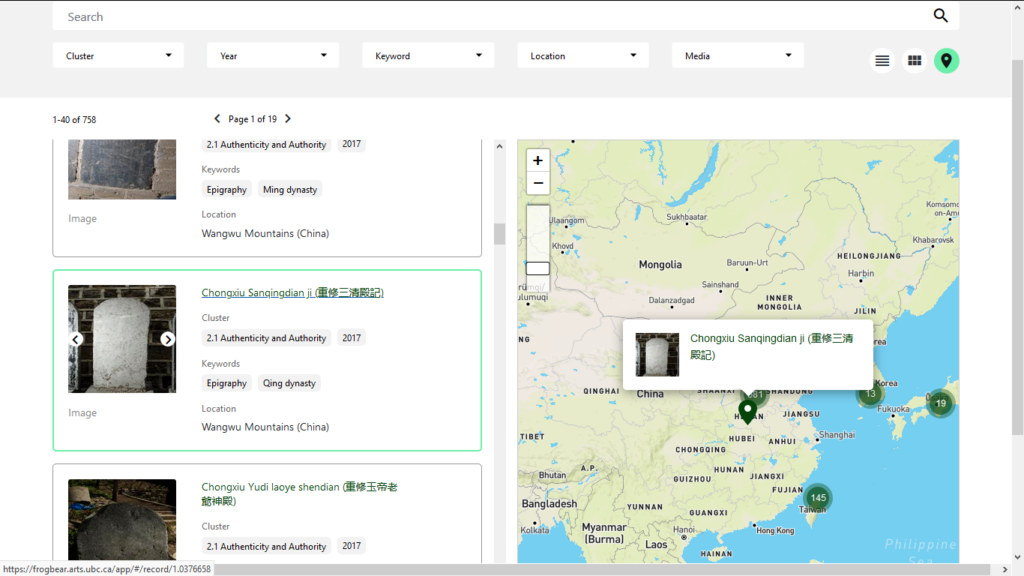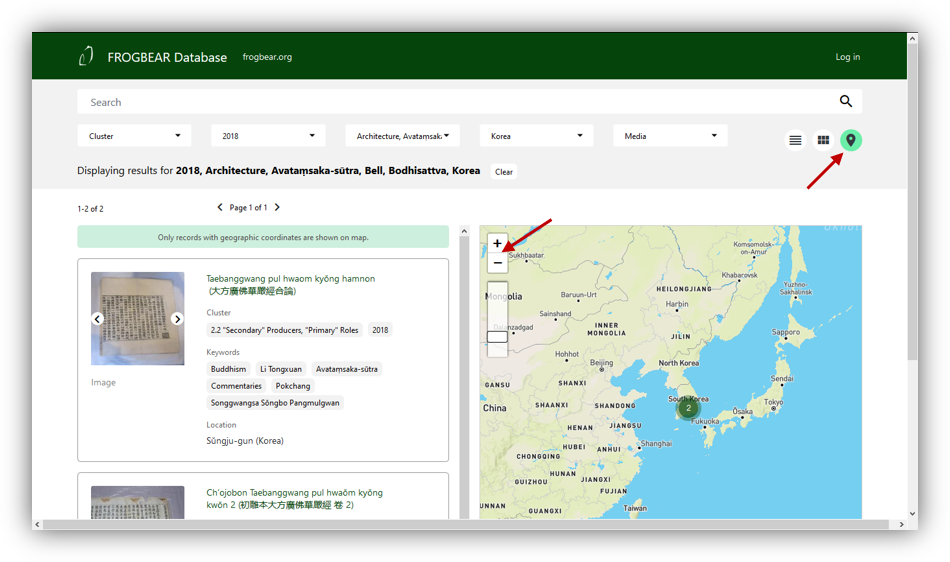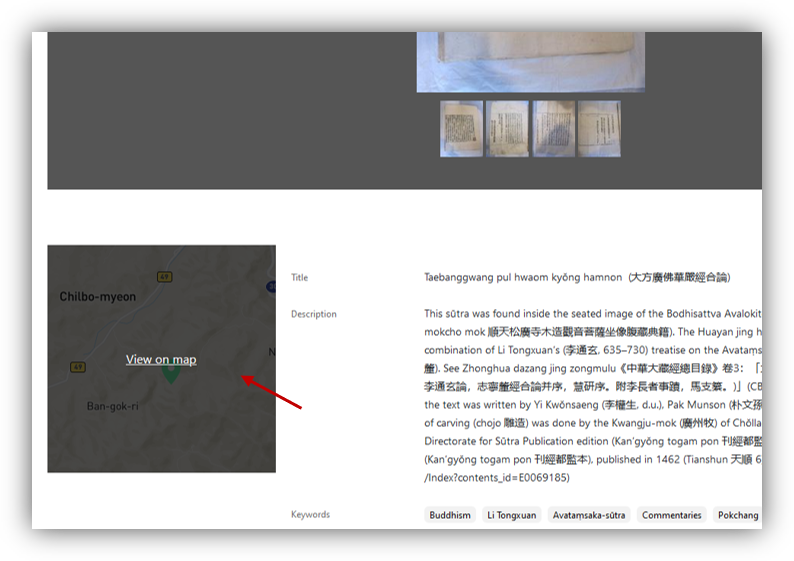This introduction is a guide to help you to become better acquainted with the FROGBEAR Database by navigating through the new interface and exploring multimedia data.
Please see the USER GUIDE for detailed information on use.
What is the FROGBEAR Database of Religious Sites in East Asia?
The FROGBEAR Database is a public open access database displaying texts, images, videos, and other research content accumulated during the seven-year SSHRC-funded research project on Buddhism and East Asian Religions. The digital materials are stored in an open access digital repository housed at the UBC Library Open Collections, at the University of British Columbia in Canada. This database, as well as each particular item contained within, serve as a unique virtual library for interested scholars, students, and the public to discover connections between seemingly disparate geographical and temporal contexts. It also helps to enhance academic interactions both within the research teams in the project and with external communities around the globe.
WATCH INTRODUCTORY USER GUIDE VIDEO
The Interface for the FROGBEAR Database of Religious Sites in East Asia
The FROGBEAR Database interface is a project that acts as a proof of concept for a larger implementation that could benefits the research community as a whole. New features introduced to this new interface can help create a more user-friendly platform to allow users to navigate and interact with the data in a flexible and meaningful way based on their search goals and needs.
The first phase of the new interface development is completed with a custom WordPress plugin using UBC Open Collection API to access and display project-related data and metadata. Only images and texts can be displayed on the new interface. Other types of data such as video, Excel spreadsheets, and PDFs, however, can be viewed by clicking on the associated records’ URIs or by visiting the records in the UBC Open Collection directly.
Features
-
- Search bar
- Users can search archived digital records by selecting Cluster, Year, Keyword individually, or combining different search terms to create custom search queries (Figure 1, Figure 2).
- Search bar

Figure 1 Search bar

Figure 2 Sample search query
- Map view
- Records that contain valid coordinates metadata can be displayed on the map view. Users can zoom in and out, or move the map to see a location and associated records they need (Figure 3, Figure 4, Figure 5).

Figure 3 Map view sample — Browsing
- Records that contain valid coordinates metadata can be displayed on the map view. Users can zoom in and out, or move the map to see a location and associated records they need (Figure 3, Figure 4, Figure 5).

Figure 4 Map view sample — Search result display

Figure 5 Map view sample — Record view
- Image view (Close-up view/zoom function)
- In record view, users can click to zoom in and out to see the details when hovering the mouse over the selected image (Figure 6).

Figure 6 Record view – Close-up view
Please note: The records reflect the information available to, and interpretation by, the researchers involved, and are not the claims of the FROGBEAR project or UBC.

